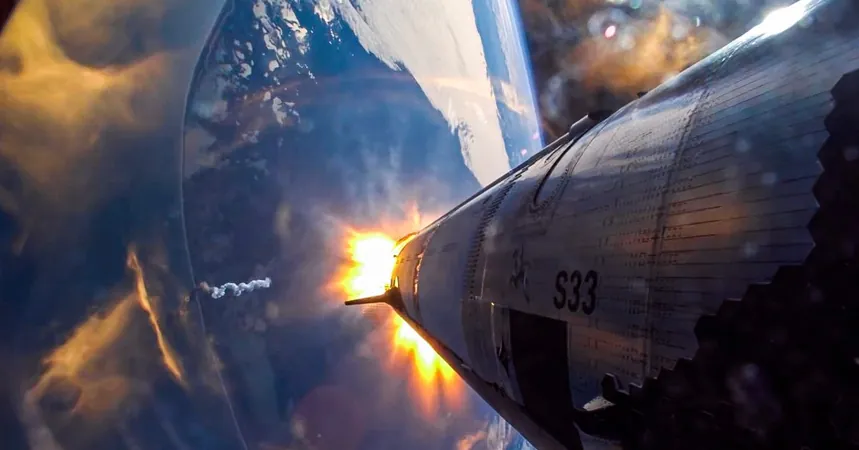
SpaceX's Starship Secures Spot on NASA's Approved Launcher List – What This Means for Future Missions!
2025-04-03
Author: Siti
In an exciting development for space exploration, NASA has officially included SpaceX’s ambitious Starship rocket in its NASA Launch Services II contract. This inclusion paves the way for future NASA missions, but there's a catch: Starship still has a long way to go in terms of development before becoming eligible for bidding.
NASA’s Launch Services program is pivotal for the agency, as it facilitates the procurement of launch services for a multitude of scientific missions, ranging from innovative tech demonstrations to high-stakes flagship projects like the Europa Clipper, which seeks to explore Jupiter's icy moon.
The Program's Categories
The program divides rockets into three categories based on their capabilities:
Category 1
Meant for newly developed rockets with limited launch experience. For instance, Blue Origin's New Glenn recently secured this approval after its initial flight.
Category 2
Designated for rockets that have successfully flown a few times, allowing them to support Class C or B missions.
Category 3
The elite tier reserved for rockets that can undertake the highest-profile missions, known as Class A missions, where success is paramount. SpaceX's Falcon 9 and Falcon Heavy currently occupy this top category.
At this stage, Starship hasn't even met the basic requirements for a Category 1 vehicle, as it has yet to successfully reach orbit after multiple test flights. However, its recent inclusion allows SpaceX to position itself to potentially certify Starship for Class D missions—albeit this may be excessive considering the scale of the rocket.
Currently, the future of Starship’s flight schedule remains uncertain. After experiencing two significant failures earlier this year, anticipation is building for its ninth test flight, with no confirmed date as of now. SpaceX executives are optimistic about achieving a successful orbital flight and deploying payloads, likely involving Starlink satellites, later this year, contingent on a successful suborbital flight with the new Block 2 Ship stage.
One of the primary avenues for Starship to prove its worth under NASA's contract will be its role as a lunar lander for the upcoming Artemis program. Although this ambitious goal is on the horizon, it's likely more than a year away from becoming a reality.
SpaceX continues to forge ahead with its groundbreaking plans, and how Starship ultimately performs may redefine not only the company's future but the landscape of space exploration as we know it. Are we on the brink of witnessing a new era in space travel? Stay tuned!

 Brasil (PT)
Brasil (PT)
 Canada (EN)
Canada (EN)
 Chile (ES)
Chile (ES)
 Česko (CS)
Česko (CS)
 대한민국 (KO)
대한민국 (KO)
 España (ES)
España (ES)
 France (FR)
France (FR)
 Hong Kong (EN)
Hong Kong (EN)
 Italia (IT)
Italia (IT)
 日本 (JA)
日本 (JA)
 Magyarország (HU)
Magyarország (HU)
 Norge (NO)
Norge (NO)
 Polska (PL)
Polska (PL)
 Schweiz (DE)
Schweiz (DE)
 Singapore (EN)
Singapore (EN)
 Sverige (SV)
Sverige (SV)
 Suomi (FI)
Suomi (FI)
 Türkiye (TR)
Türkiye (TR)
 الإمارات العربية المتحدة (AR)
الإمارات العربية المتحدة (AR)